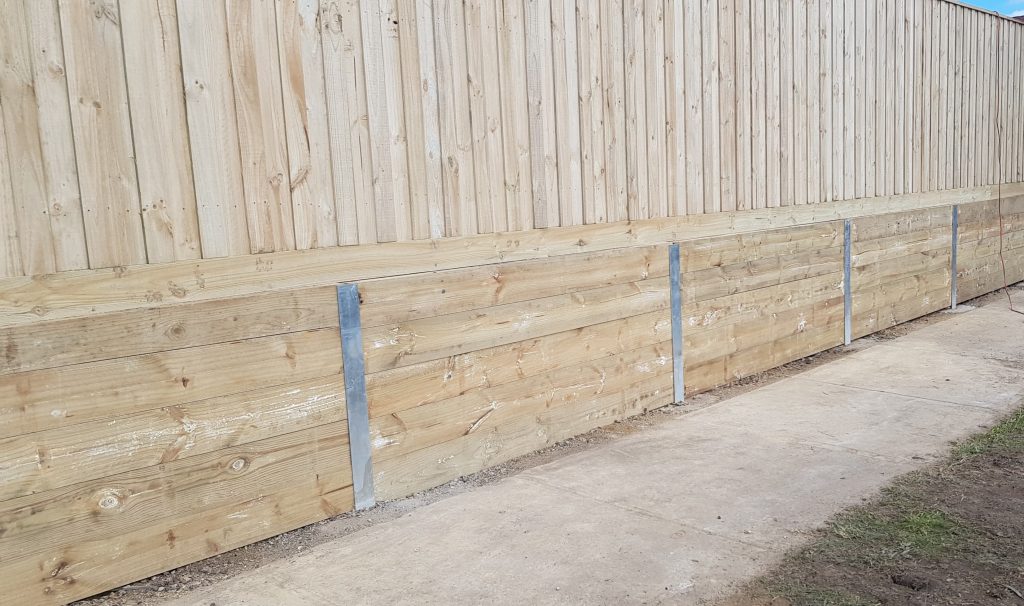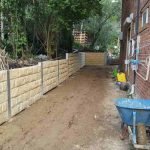Introduction
Retaining walls have become a staple in modern-day landscaping and civil engineering. They serve not only practical functions however also add visual worth to homes. Whether you're dealing with sloped terrains or seeking to improve your outdoor aesthetic appeals, the need for a robust retaining wall setup can not be overemphasized. In this article, we will dig deeply into the intricacies of retaining wall installation, making sure longevity and safety. From comprehending various materials such as timber sleeper and concrete sleeper to checking out professional installation methods, we have actually got you covered.

Retaining Wall Setup: Guaranteeing Longevity and Safety
When it concerns retaining wall installation, ensuring longevity and security is critical. A well-constructed retaining wall can hold up against the pressures of soil and water erosion while supplying stability to your landscape. But how do you accomplish this? The answer depends on precise preparation, quality materials, and professional expertise.
A retaining wall not just supports soil but likewise can avoid soil disintegration, handle water overflow, and create functional flat spaces in sloped locations. However, improper installation can lead to devastating failures, such as landslides or structural damage. Hence, buying professional services is crucial.
Understanding Maintaining Walls
What is a Maintaining Wall?
A retaining wall is a structure designed to keep back soil and support slopes. These walls are generally built using numerous products like stone, brick, concrete blocks, lumber sleepers, or perhaps steel H beams.
Why are Maintaining Walls Important?
- Preventing Erosion: Maintaining walls play a critical function in managing soil disintegration caused by rain or water runoff. Creating Functional Area: They allow property owners to make use of sloped land for gardens or patios. Safety: By stabilizing slopes, they decrease the danger of landslides that might endanger lives.
Types of Retaining Walls
1. Gravity Walls
Gravity walls count on their weight to resist the pressures from behind. Generally made from heavy materials like concrete or stone, they're robust yet need appropriate drain behind them.
2. Cantilevered Walls
These walls utilize utilize to counteract pressure from the retained soil by extending into the soil below them. They typically utilize reinforced concrete for added strength.
3. Sheet Stack Walls
Made from steel (H beam) or wood (timber sleeper), sheet stack walls are driven into the ground and work well in soft soil conditions where other types might fail.
4. Anchored Walls
These include anchors drilled into the rock or soil behind them for additional support versus lateral pressure.
Choosing the Right Material for Your Keeping Wall
Timber Sleeper Walls
Timber sleeper walls are an economical choice for property jobs; nevertheless, they may not last as long as other products unless effectively dealt with against rot.
- Pros: Cost-effective. Aesthetically pleasing with a natural look. Cons: Susceptible to decay if untreated. Limited life expectancy compared to concrete options.
Concrete Sleeper Walls
Concrete sleeper walls offer resilience and strength that timber just can not match.
- Pros: Highly resilient; resistant to rot. Can handle substantial loads without failure. Cons: Higher in advance expenses compared to wood options. Requires competent labor for appropriate installation.
Professional vs DIY Installation: What Should You Choose?
While it might be appealing to take on a retaining wall task yourself, hiring specialists ensures security and quality craftsmanship. Here's why:
- Expertise: Professionals understand local codes and policies better than the majority of DIYers. Tools & Equipment: Specialized tools make installation easier and more precise.
FAQ: Why hire specialists for retaining wall installations?
Hiring experts saves time and assurances quality workmanship that fulfills security standards.
The Installation Process: Step-by-Step Guide
1. Preparation Your Project
- Assess your land's slope degree. Determine suitable materials (timber sleeper vs concrete sleeper). Check regional zoning laws concerning height limits.
2. Creating Your Wall
- Sketch out your style consisting of height and length. Consider drain services from the outset.
3. Preparing the Site
- Clear any greenery or particles from your worksite. Mark out where your wall will sit utilizing stakes and string lines.
4. Digging the Foundation
- Excavate a trench deep enough (normally about one-third of your wall height). Ensure it's level; uneven bases can lead to structural issues down the line.
5. Setting Up Drainage Solutions
- Proper drain is essential in preventing hydrostatic pressure behind your wall which might cause failure over time.
6. Building Your Wall
- Start setting your selected material-- whether it's lumber sleepers stacked horizontally or concrete obstructs arranged vertically. Use mortar in between layers if dealing with concrete obstructs for enhanced strength.
Maintenance Tips for Longevity
Even after setup, keeping your retaining wall guarantees its durability:
Regularly look for fractures or signs of wear. Clean any debris blocking drainage holes or weep holes. Monitor plant development near the base; roots can destabilize structures over time.Common Problems with Keeping Walls
Despite careful planning and execution, issues can emerge:
Water Accumulation: Poor drainage causes press build-up that can split walls. Soil Movement: If surrounding soil shifts all of a sudden due to weather modifications-- like heavy rain-- it might compromise structural integrity.FAQs About Retaining Wall Installation
Q1: For how long does it take to install a maintaining wall?
A1: Depending on size and complexity, it can take anywhere from a few days up to a number of weeks for professional installations.
Q2: What is the life expectancy of a timber sleeper maintaining wall?
A2: Correctly dealt with wood can last around 15-- twenty years; without treatment wood might last substantially shorter.
Q3: Exist specific building regulations I need to follow?
A3: http://holdenfence-builderuson486.cavandoragh.org/from-idea-to-conclusion-a-day-in-the-life-of-a-retaining-wall-builder Yes! Local building codes regulate numerous aspects including height constraints so constantly examine before beginning construction.
Q4: Can I construct a retaining wall myself?
A4: While possible for experienced DIYers, hiring specialists is frequently suggested due to intricacies involved.
Q5: Do I need licenses for my keeping wall?
A5: Many locations need permits particularly if surpassing particular heights-- consult regional authorities beforehand!

Q6: How do I choose between timber sleeper and concrete sleeper?
A6: Consider budget plan constraints versus wanted longevity; lumber is more affordable but less long lasting compared with concrete options.
Conclusion
In conclusion, understanding how necessary appropriate retention systems function within landscapes can not be downplayed when thinking about tasks including hillsides or slopes! Whether selecting wood sleepers or strong cinder block-- requiring time during both preparing phases AND application guarantees lasting outcomes that stand against nature's components while boosting residential or commercial property appeal! Buying professional services will ultimately save headaches down-the-line-- not just economically-- but also concerning security issues associated with inadequately constructed structures! Keep in mind ... longevity isn't simply about selecting best products-- it includes comprehensive groundwork too!
This comprehensive guide has aimed at responding to all your burning questions surrounding "Retaining Wall Installation: Guaranteeing Durability and Safety." So whether you're taking a look at boosting curb appeal in your yard garden or supporting steep inclines-- you now possess a toolbox of understanding prepared at hand!